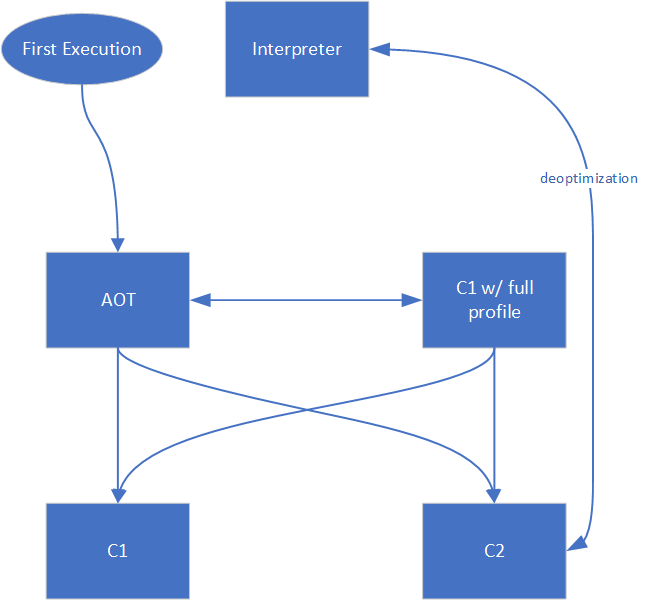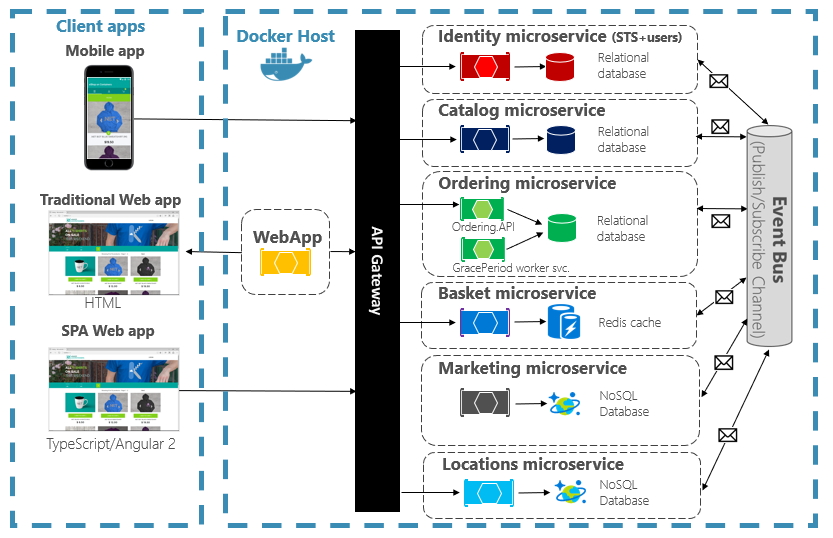The Java ecosystem is in a constant state of evolution, and at the heart of this transformation is the Spring Framework. As developers navigate the complexities of modern application development—from cloud-native architectures to the demand for higher performance and stronger code safety—the Spring team continues to innovate. Recent announcements and ongoing development efforts are setting a clear path forward, focusing on three critical pillars: dramatically improved performance through Ahead-of-Time (AOT) compilation, enhanced code quality with standardized null safety, and a forward-looking roadmap that embraces the latest advancements in the Java platform. This wave of updates, including the road to Spring Framework 7 and Spring Boot 4, signals a significant shift for the entire community. This article delves into these key developments, providing in-depth explanations, practical code examples, and actionable insights to help you prepare for the next generation of Spring and Java development. It’s a crucial time for developers to stay informed, as these changes will fundamentally shape how we build robust, efficient, and maintainable applications.
Blazing Fast Startups: Mastering Ahead-of-Time (AOT) Compilation
For years, the Java Virtual Machine (JVM) has relied on Just-in-Time (JIT) compilation to optimize code at runtime. While incredibly powerful for long-running applications, this model introduces a startup overhead that can be a bottleneck in serverless functions, microservices, and containerized environments where fast boot times are critical. The latest Spring Boot news is heavily focused on solving this with first-class support for Ahead-of-Time (AOT) compilation, primarily through GraalVM Native Image.
AOT compilation transforms Java code directly into a self-contained, platform-specific native executable. This process performs static analysis at build time to determine all reachable code, effectively eliminating unused parts of the application, its libraries, and the JDK itself. The result is a highly optimized binary with near-instantaneous startup times and a significantly smaller memory footprint. This is a game-changer for Java performance news and a direct answer to the needs of modern cloud architectures.
Practical Example: Creating a GraalVM Native Image
To leverage AOT, you need a compatible JDK distribution like GraalVM or a build of OpenJDK with GraalVM components (e.g., from Oracle, Adoptium, or Amazon Corretto). Let’s see how to configure a Maven project to build a native executable.
First, ensure your pom.xml is configured for native compilation. Spring Boot’s build plugins simplify this process immensely. You’ll need the spring-boot-starter-parent, a web dependency, and the native build profile.
<?xml version="1.0" encoding="UTF-8"?>
<project xmlns="http://maven.apache.org/POM/4.0.0" xmlns:xsi="http://www.w3.org/2001/XMLSchema-instance"
xsi:schemaLocation="http://maven.apache.org/POM/4.0.0 https://maven.apache.org/xsd/maven-4.0.0.xsd">
<modelVersion>4.0.0</modelVersion>
<parent>
<groupId>org.springframework.boot</groupId>
<artifactId>spring-boot-starter-parent</artifactId>
<version>3.3.0</version> <!-- Use a recent version -->
<relativePath/>
</parent>
<groupId>com.example</groupId>
<artifactId>native-demo</artifactId>
<version>0.0.1-SNAPSHOT</version>
<name>native-demo</name>
<description>Demo project for Spring Boot Native Image</description>
<properties>
<java.version>17</java.version> <!-- Or 21 -->
</properties>
<dependencies>
<dependency>
<groupId>org.springframework.boot</groupId>
<artifactId>spring-boot-starter-web</artifactId>
</dependency>
</dependencies>
<build>
<plugins>
<plugin>
<groupId>org.springframework.boot</groupId>
<artifactId>spring-boot-maven-plugin</artifactId>
</plugin>
</plugins>
</build>
<profiles>
<profile>
<id>native</id>
<build>
<plugins>
<plugin>
<groupId>org.graalvm.buildtools</groupId>
<artifactId>native-maven-plugin</artifactId>
<!-- Configuration is inherited from Spring Boot parent -->
</plugin>
</plugins>
</build>
</profile>
</profiles>
</project>With this configuration, you can build the native executable using the native profile:
# Build the native executable
./mvnw native:compile -Pnative
# Run the application
./target/native-demoThe resulting binary in the target directory will start in milliseconds, a stark contrast to the seconds it might take on the JVM. This is a cornerstone of modern Java SE news and critical for cost-effective cloud deployments.

Eradicating NullPointerExceptions: Null Safety with JSpecify
The NullPointerException (NPE) is arguably the most infamous error in Java’s history. It represents a contract violation that the type system traditionally couldn’t enforce. While modern practices like using Optional and defensive coding help, they add boilerplate and don’t solve the root problem. The latest Spring news highlights a strategic move towards compile-time null safety by adopting JSpecify.
JSpecify is not a library but a specification—a standard set of nullness annotations (like @NonNull and @Nullable) that static analysis tools can understand. By standardizing these annotations, the entire Java ecosystem news benefits, as tools from different vendors can interoperate seamlessly. Spring Framework 6.1 and later versions have started annotating their APIs with JSpecify, providing developers with immediate feedback in their IDEs and build tools about potential NPEs before the code is even run.
Implementing Null-Safe Services
Let’s consider a typical service class that might be prone to NPEs. By applying JSpecify annotations, we can make its contracts explicit.
First, add the JSpecify dependency to your project. It’s a compile-time-only dependency, so it adds no overhead to your final artifact.
<dependency>
<groupId>org.jspecify</groupId>
<artifactId>jspecify</artifactId>
<version>0.3.0</version>
<scope>provided</scope>
</dependency>Now, let’s annotate a service. By default, you can configure your project to treat all types as non-null unless explicitly marked as @Nullable. This “non-null by default” approach is a powerful convention.
package com.example.userservice;
import org.jspecify.annotations.Nullable;
import org.springframework.stereotype.Service;
// Assume a package-level default non-null annotation is configured
// or annotate the class with @NonNullApi
@Service
public class UserService {
private final UserRepository userRepository;
public UserService(UserRepository userRepository) {
// The framework guarantees this is non-null
this.userRepository = userRepository;
}
// The return type is non-null by default, promising to never return null.
public User findUserById(Long id) {
User user = userRepository.findById(id);
if (user == null) {
// Throwing an exception fulfills the non-null contract.
throw new UserNotFoundException("User with id " + id + " not found.");
}
return user;
}
// This method explicitly declares it might return null.
public @Nullable User findUserByEmail(String email) {
return userRepository.findByEmail(email);
}
public void updateUserProfile(Long id, @Nullable String newBio) {
User user = findUserById(id); // Guaranteed non-null
// Static analysis tools would warn if you tried to call a method on newBio
// without a null check first.
if (newBio != null) {
user.setBio(newBio);
}
userRepository.save(user);
}
}
// Dummy repository for illustration
interface UserRepository {
@Nullable User findById(Long id);
@Nullable User findByEmail(String email);
void save(User user);
}
class User {
private String bio;
public void setBio(String bio) { this.bio = bio; }
}
class UserNotFoundException extends RuntimeException {
public UserNotFoundException(String message) { super(message); }
}In this example, the IDE and static analysis tools will now flag any code that calls findUserByEmail and immediately tries to dereference the result without a null check. This proactive error detection is a massive leap forward for Java security news and code robustness, preventing entire classes of bugs from reaching production.
The Horizon: Spring Framework 7, Spring Boot 4, and Project Loom
Looking ahead, the roadmap for Spring Framework 7 and Spring Boot 4, slated for late 2025, is deeply intertwined with the evolution of the Java platform itself, particularly with the features delivered in Java 21 news. The most impactful of these is Project Loom, which introduced virtual threads to the JVM.

Virtual threads are lightweight threads managed by the JVM, not the operating system. This allows for the creation of millions of virtual threads with minimal overhead, revolutionizing how we write concurrent code. The classic thread-per-request model, which was once considered unscalable, becomes viable again. This is a central theme in recent Java concurrency news and Project Loom news.
Simplifying Concurrency with Virtual Threads
For Spring developers, this means a potential shift away from the complexities of reactive programming (like Project Reactor) for I/O-bound tasks. While reactive programming remains powerful for CPU-bound streams and complex event processing, simple concurrent I/O can be written in a much more straightforward, imperative style.
Future versions of Spring Boot will likely enable virtual threads by default for web requests. Imagine a controller making multiple downstream API calls. With virtual threads, this code can be written sequentially without blocking precious OS threads.
@RestController
public class AggregationController {
private final WebClient webClient = WebClient.create();
// In a future Spring Boot with virtual threads enabled by default,
// this blocking-style code would be highly scalable.
@GetMapping("/user-data/{userId}")
public AggregatedData getUserData(@PathVariable String userId) {
// Each .retrieve().bodyToMono().block() call would suspend the virtual thread,
// not the OS thread, allowing the server to handle thousands more concurrent requests.
// This is a conceptual example. The actual API might evolve.
// With structured concurrency, these could run in parallel easily.
// Start tasks in parallel using structured concurrency (a feature related to Loom)
try (var scope = new StructuredTaskScope.ShutdownOnFailure()) {
Future<Profile> profileFuture = scope.fork(() -> fetchProfile(userId));
Future<List<Order>> ordersFuture = scope.fork(() -> fetchOrders(userId));
scope.join(); // Wait for both to complete
scope.throwIfFailed(); // Propagate exceptions
return new AggregatedData(profileFuture.resultNow(), ordersFuture.resultNow());
} catch (Exception e) {
throw new ResponseStatusException(HttpStatus.INTERNAL_SERVER_ERROR, "Failed to fetch data", e);
}
}
private Profile fetchProfile(String userId) {
// blocking I/O call
return webClient.get().uri("/api/profiles/{id}", userId).retrieve().bodyToMono(Profile.class).block();
}
private List<Order> fetchOrders(String userId) {
// blocking I/O call
return webClient.get().uri("/api/orders/{id}", userId).retrieve().bodyToFlux(Order.class).collectList().block();
}
}This paradigm shift, enabled by Java virtual threads news, will simplify the mental model for many developers, making it easier to write highly concurrent and performant applications without the steep learning curve of reactive frameworks. This aligns with a broader trend in Java wisdom tips news: use the simplest tool that solves the problem effectively.
Best Practices for Navigating the Evolving Spring Ecosystem
With such significant changes on the horizon, it’s essential for teams to adopt a proactive strategy. Staying current is no longer just a good practice; it’s a necessity for security, performance, and access to modern features.
Key Considerations and Best Practices
- Understand Support Durations: Be aware of Spring’s support lifecycle. Major Spring Boot versions (e.g., 3.x) have a defined open-source support window. Plan your upgrades accordingly to avoid being on an unsupported version, which can expose you to security vulnerabilities.
- Embrace Modern Java: The future of Spring is tied to modern Java LTS releases (like Java 17 and 21). Migrating from older versions like Java 8 or 11 is a prerequisite for leveraging AOT and virtual threads. The entire OpenJDK news cycle is now faster, and frameworks are keeping pace.
- Iterative AOT Adoption: Migrating an existing application to be GraalVM native-image compatible can be challenging. It requires careful handling of reflection, resources, and proxies. Start with smaller, new services to gain experience. Use the testing tools provided by Spring Boot to validate native image compatibility early in the development process.
- Integrate Static Analysis: Don’t just add JSpecify annotations; integrate static analysis tools like Checkstyle, SpotBugs, or SonarQube into your CI/CD pipeline. This enforces your null-safety contracts automatically, improving code quality across the team.
- Keep Build Tools Updated: Whether you use Maven or Gradle, ensure your build plugins (especially
spring-boot-maven-pluginorspring-boot-gradle-plugin) are up to date. This is critical for AOT compilation and dependency management. Staying current with Maven news and Gradle news is part of maintaining a healthy project.
Conclusion: A New Era for Spring Development
The Spring ecosystem is undergoing a profound evolution, driven by the demands of the cloud-native world and the powerful new capabilities of the modern Java platform. The focus on Ahead-of-Time compilation with GraalVM is set to redefine performance standards, making Java a top-tier choice for serverless and microservices. The adoption of JSpecify for null safety represents a significant step towards building more resilient and bug-free applications by catching errors at compile time. Finally, the forward-looking roadmap embracing Java 21’s virtual threads promises to simplify concurrent programming, allowing developers to write scalable, easy-to-read code.
For developers, the path forward is clear: stay current with Java LTS releases, begin experimenting with AOT for performance-critical applications, and start integrating null-safety annotations into your codebase. By embracing these changes, you can ensure your applications are not only performant and robust but also ready for the future of enterprise Java development.

